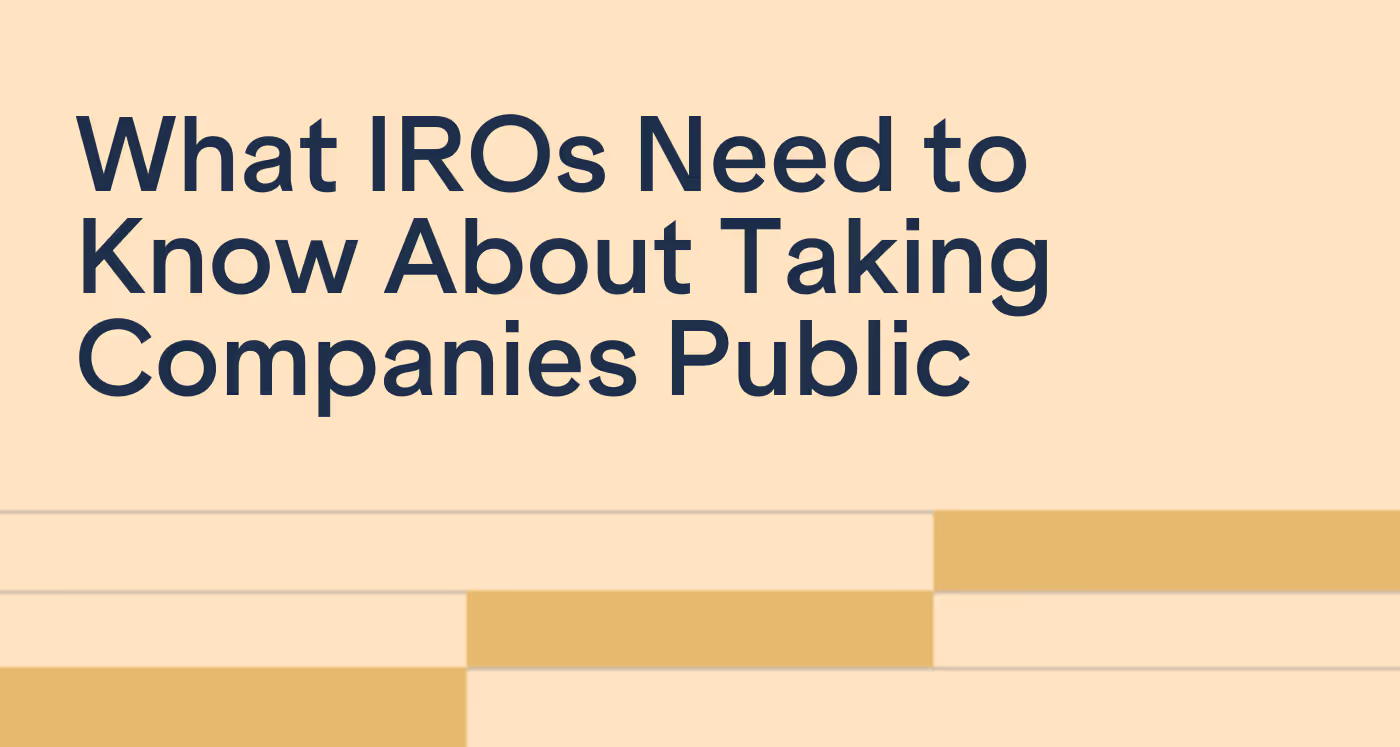
How to Build Effective Investor Targeting and Outreach Strategies for Small-Mid-Cap Companies
Learn how seasoned IR veterans are executing targeting strategies for small-mid-cap companies.

Finding the right investors for your company can feel like finding a needle in a haystack, and it can often feel like you’re pulling from the same list of investors over and over again. So how do you get creative in your search for new investors for your company? How do you find investors that are harder to find and more opaque in nature, yet are potentially high-value long-term partners?
Most importantly, how do you balance the art of creative investor targeting with the science of understanding who is likely to invest in your business?

The least creative, most objective, and easiest to find investors are going to be investors who own or have owned your peers on a global basis. This investor is likely to care about your business and will be easy to find by examining the current and historical shareholder bases of your peers. If, for example, an investor holds your peers, but not your stock, you know they’re likely to be interested in your business and they will make a strong initial target.
Using Irwin below is an example (using AAPL and MSFT) of how you would leverage the peer ownership matrix to find investors who are holding at least one of either your company or your peers:

This also illustrates movements in both your stock and your peers, which can be a good trigger for investor outreach.
Helpful Tip: Use the sorting functionality to sort by desired columns. For example, you may sort by certain peer shareholder bases to directly compare to your company, or by the “No. Peers Holding” to target those investors who hold the highest quantity of your peers.
Adding a little more specificity, it will be beneficial to look at investors who own your peers in specific geographies. This is particularly useful if you already know that you’ll be targeting in a certain region for marketing purposes (ie. for a conference or roadshow).
Continuing to use AAPL as the example and navigating to the Target function within Irwin, we can see that if we select investors who are located in the United States, hold MSFT, have geographic ownership in the US, and don’t have ownership in AAPL, our number of prospective investors is quite high:

Moving down the funnel, we can remove peer ownership as criteria to focus on investors who are likely to invest in companies like yours. When we remove peer ownership, we will replace it with investors who invest in your company’s geography, market cap, sector, or sub-sector, and they might have specific investment styles. For example:
When we apply this level of detail to our target list, it reduces the list from 306 potential investors to 60:

As we get more creative in our targeting approach, our criteria can expand outside of investors who report their holdings. By definition, investors who report their holdings will naturally be more transparent to a wider group of capital seekers. Generally, categories of investors who do not report holdings are family offices, smaller hedge funds, investment managers, as well as retail investment advisors. These investors are likely to be solicited less often by others and can often serve to be long-term partner shareholders who ultimately serve to lower your cost of capital. This information requires either a lot of manual searching or an investor targeting tool that has differentiated, harder-to-find data such as Irwin.
To do this, we simply add one more condition to our targeting screen: “Does not report holdings”. You can see below how that’s changed our number of prospective investors:

Another important consideration when conducting investor targeting is that not all investors are located in the major financial hubs such as New York, Boston, London, Hong Kong, etc. The reality is that there are investors in all corners of the world (or even your country) that invest in companies like yours. Irwin’s Money Flows feature is built for exactly this purpose; to highlight the investors in tertiary geographies that are relevant to you. Let’s review this example of Money Flows within Irwin:
In the below image, we’re highlighting how Irwin’s Money Flows feature is surfacing investors all around the United States, even for a very specific search such as Canadian small cap precious metals. We can see tertiary regions highlighted such as Denver, Ketchum, Dallas, Kansas City and New Orleans. Clicking into the regions will subsequently surface the specific investors that are making up that relevant money flow.

Investor targeting is a mission critical function of modern IR departments and public companies as a whole. It’s important to have a defined process but to be creative in how you approach targeting investors - being willing to look where others may not will provide you with a competitive advantage in finding and converting the best opportunities for long term, partnership-oriented investors.
Learn more about how Irwin can help you find new investors

Learn how seasoned IR veterans are executing targeting strategies for small-mid-cap companies.

Elizabeth Librizzi breaks down the secrets of buy-side corporate access to help investor relations professionals utilize buy-side firms.

What IROs Need to Know About Taking Companies Public: Insights from award winning investor relations thought leader Catherine Buan.